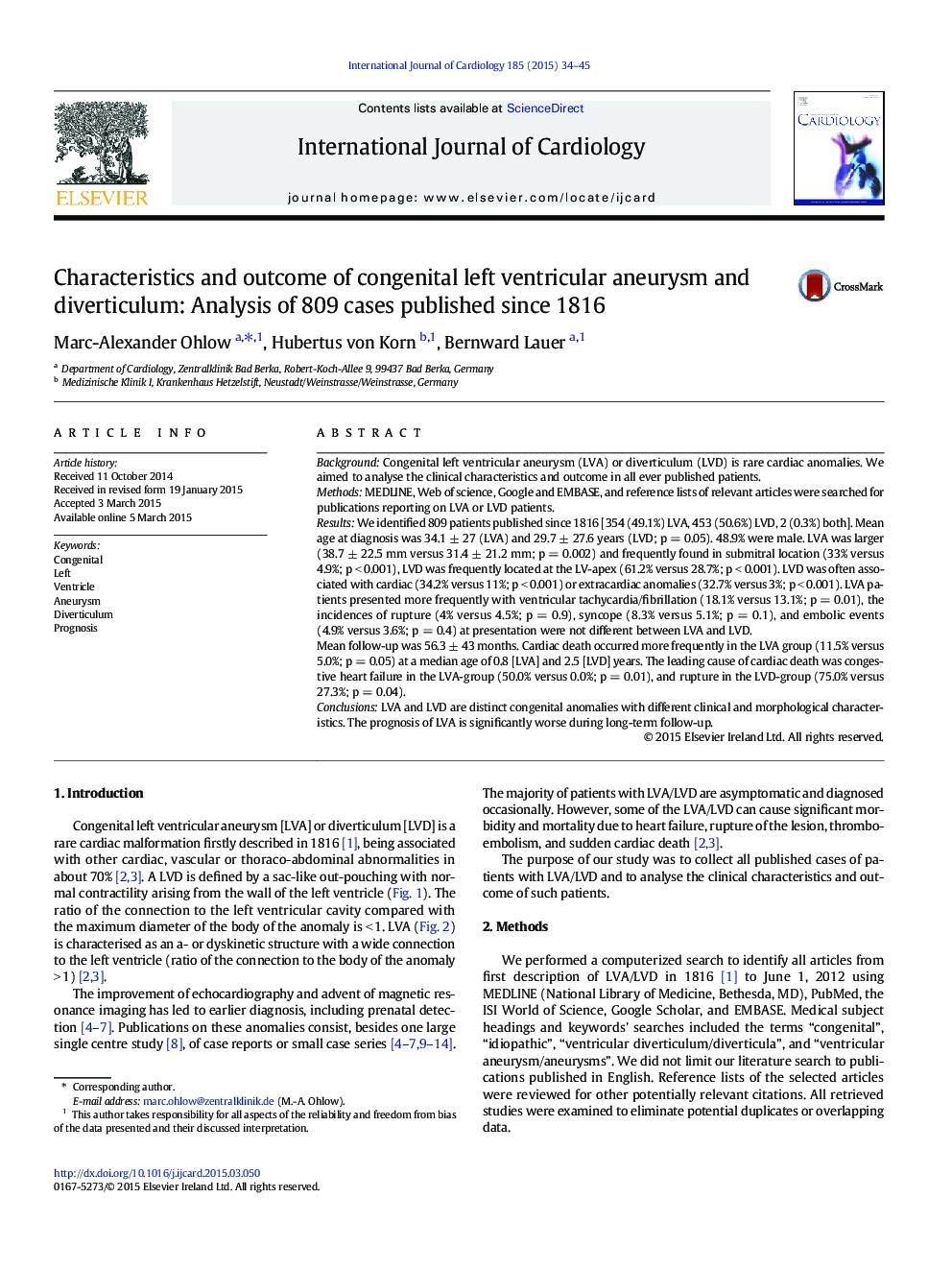| Article ID | Journal | Published Year | Pages | File Type |
|---|---|---|---|---|
| 2929080 | International Journal of Cardiology | 2015 | 12 Pages |
BackgroundCongenital left ventricular aneurysm (LVA) or diverticulum (LVD) is rare cardiac anomalies. We aimed to analyse the clinical characteristics and outcome in all ever published patients.MethodsMEDLINE, Web of science, Google and EMBASE, and reference lists of relevant articles were searched for publications reporting on LVA or LVD patients.ResultsWe identified 809 patients published since 1816 [354 (49.1%) LVA, 453 (50.6%) LVD, 2 (0.3%) both]. Mean age at diagnosis was 34.1 ± 27 (LVA) and 29.7 ± 27.6 years (LVD; p = 0.05). 48.9% were male. LVA was larger (38.7 ± 22.5 mm versus 31.4 ± 21.2 mm; p = 0.002) and frequently found in submitral location (33% versus 4.9%; p < 0.001), LVD was frequently located at the LV-apex (61.2% versus 28.7%; p < 0.001). LVD was often associated with cardiac (34.2% versus 11%; p < 0.001) or extracardiac anomalies (32.7% versus 3%; p < 0.001). LVA patients presented more frequently with ventricular tachycardia/fibrillation (18.1% versus 13.1%; p = 0.01), the incidences of rupture (4% versus 4.5%; p = 0.9), syncope (8.3% versus 5.1%; p = 0.1), and embolic events (4.9% versus 3.6%; p = 0.4) at presentation were not different between LVA and LVD.Mean follow-up was 56.3 ± 43 months. Cardiac death occurred more frequently in the LVA group (11.5% versus 5.0%; p = 0.05) at a median age of 0.8 [LVA] and 2.5 [LVD] years. The leading cause of cardiac death was congestive heart failure in the LVA-group (50.0% versus 0.0%; p = 0.01), and rupture in the LVD-group (75.0% versus 27.3%; p = 0.04).ConclusionsLVA and LVD are distinct congenital anomalies with different clinical and morphological characteristics. The prognosis of LVA is significantly worse during long-term follow-up.
